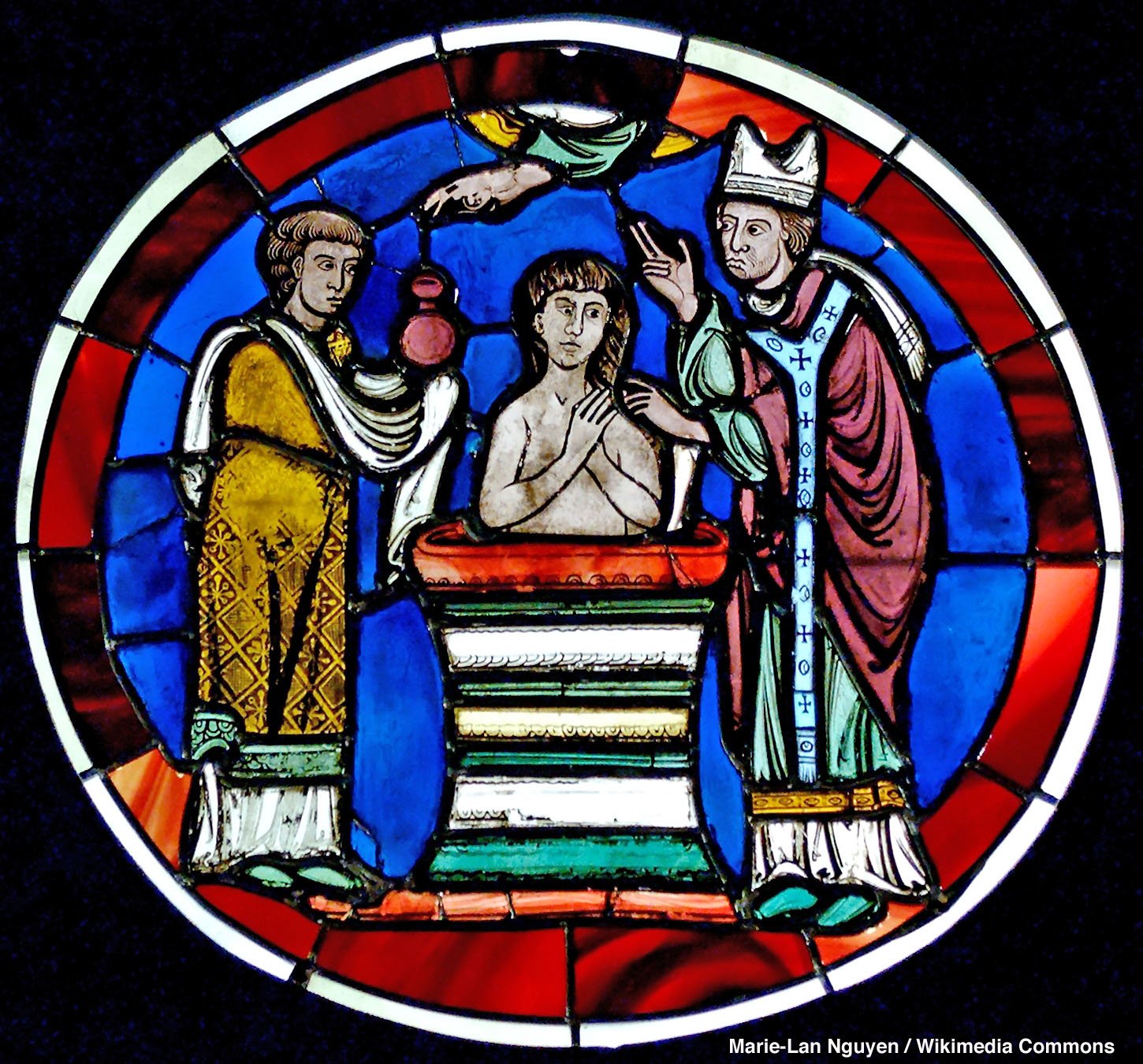The French Glass Tradition
By Walt Lieberman, Artist, Educator and Hot Shop Emcee
France has a long and proud tradition in glass. Throughout the ages, the French artists have made important contributions to the field. The French first come to prominence with the stained glass windows in great cathedrals of the Middle Ages. These magnificent windows were the jewels in the crown of these stately buildings. They were an expression of great art and great faith. You can still see them today in churches like Sainte-Chapelle, Chartres and Notre Dame.
Scene of Baptism. Stained glass. Last quarter of the 12th century. From the Sainte-Chapelle de Paris. Paris, France.
There were also other lesser known, but equally impressive traditions such as the lampworked glass figures called “verre de Nevers”. Starting in the 1600s, French artisans made beautiful and highly detailed figures. The figures were made from glass rods melted on to a metal wire armature. The subjects spanned the gamut from lowly farm animals to Marie Antoinette.
Marie Antoinette Sacrifices the Heart of the Nobility on the Alter of the French Republic, Pierre Haly. Lampworked glass. Nevers, France. 1790.
The process for making large mirrors was invented in France in the late 1600s. This was done by casting large rough glass plates, which were then ground down and polished. You can see spectacular examples of this in the Hall of Mirrors at Louis XIV’s palace at Versailles.
In the 1700s France saw the beginnings of the great crystal factories of Baccarat and St. Louis (pronounced sahn-loo-ee). They made glass favored by royalty and elegant tableware and sparkling chandeliers. The pure brilliant lead glass was cut with perfection and skill. In the 1800s the St. Louis the oldest glass factory in France made intricate paperweights unsurpassed in their skillful execution.
Vase. Compagnie des Verreries et Cristalleries de Baccarat. France. About 1889-1898.
Floral Paperweight. Compagnie des Cristalleries de Saint Louis. Late 1800s
Perhaps the greatest French influence on glassmaking was the artist Emile Gallé. Gallé started in his father’s factory and went on to become the most important glass artist of the Art Nouveau movement. His interests in botany, nature and poetry were major influences in his work. He is most famous for his cameo vases, which were made with multiple layers of different colored glasses. They were then carved back through those layers to create intricate multi-colored designs that often featured the flora and fauna of the Lorraine where he lived and worked. His work was an inspiration to many others like the Daum brothers of Nancy, France and even Orrefors, the famous Swedish glass factory.
Le Débat éternel (The Eternal Debate), Emile Gallé. Mold-blown, cased and cut glass. Nancy, France. About 1889-1898
René Lalique was the French genius of glass for the industrial age. He was a major artist of the Art Deco period, but started his career as a jeweler. He shocked the aristocracy by using colored glass together with precious metals and jewels in his pieces. Later, he would build a business on glass alone. He produced beautiful art glass utilizing the means of mass production and was one of the few glass artists to build a very successful business. Lalique made everything under the sun out of glass, including clocks, fountains, vases and even hood ornaments for cars.
Escargot, René Lalique. Mold-blown glass. Combs-la-Ville, France. 1920.
Today the French art glass is alive and well thanks to the outstanding artists of Biot. The Museum of Glass has been honored to welcome them to our Hot Shop in the past and hopes to continue developing this special glass art relationship.






